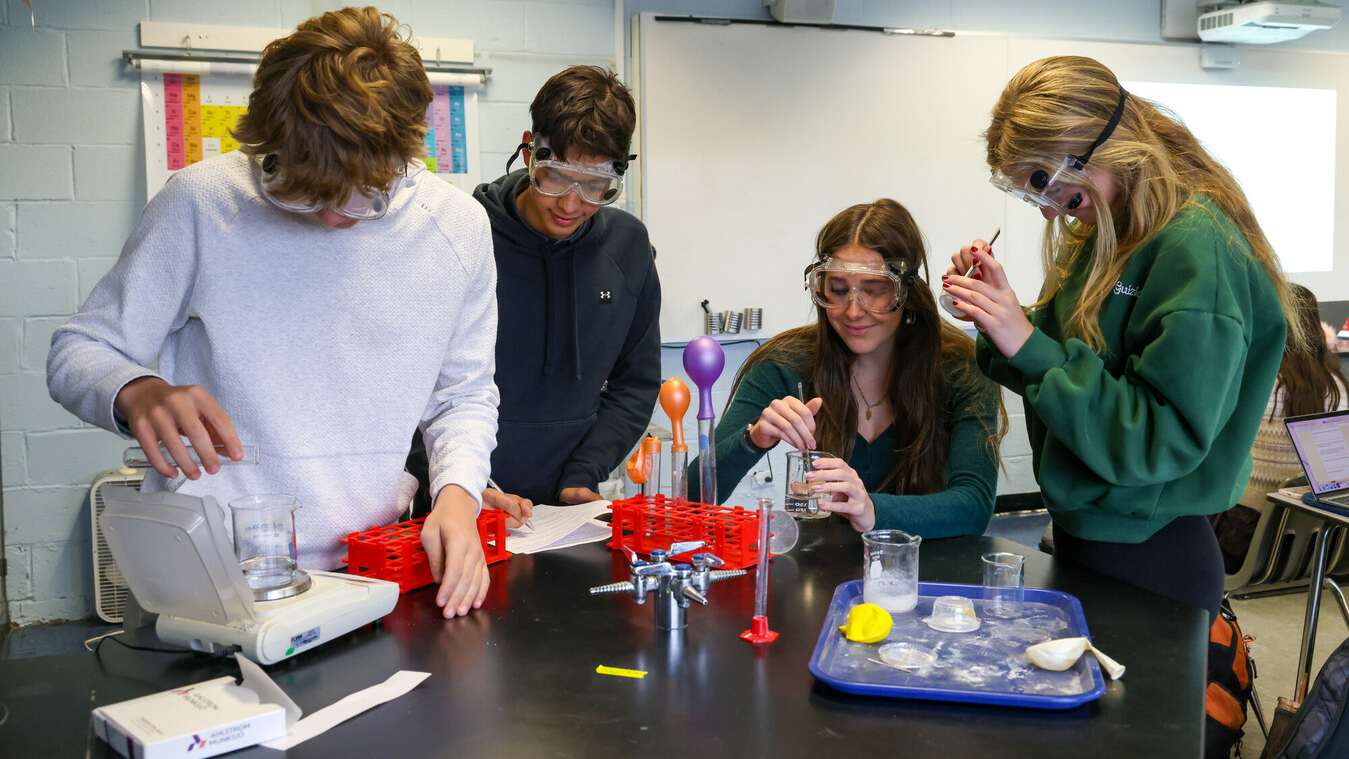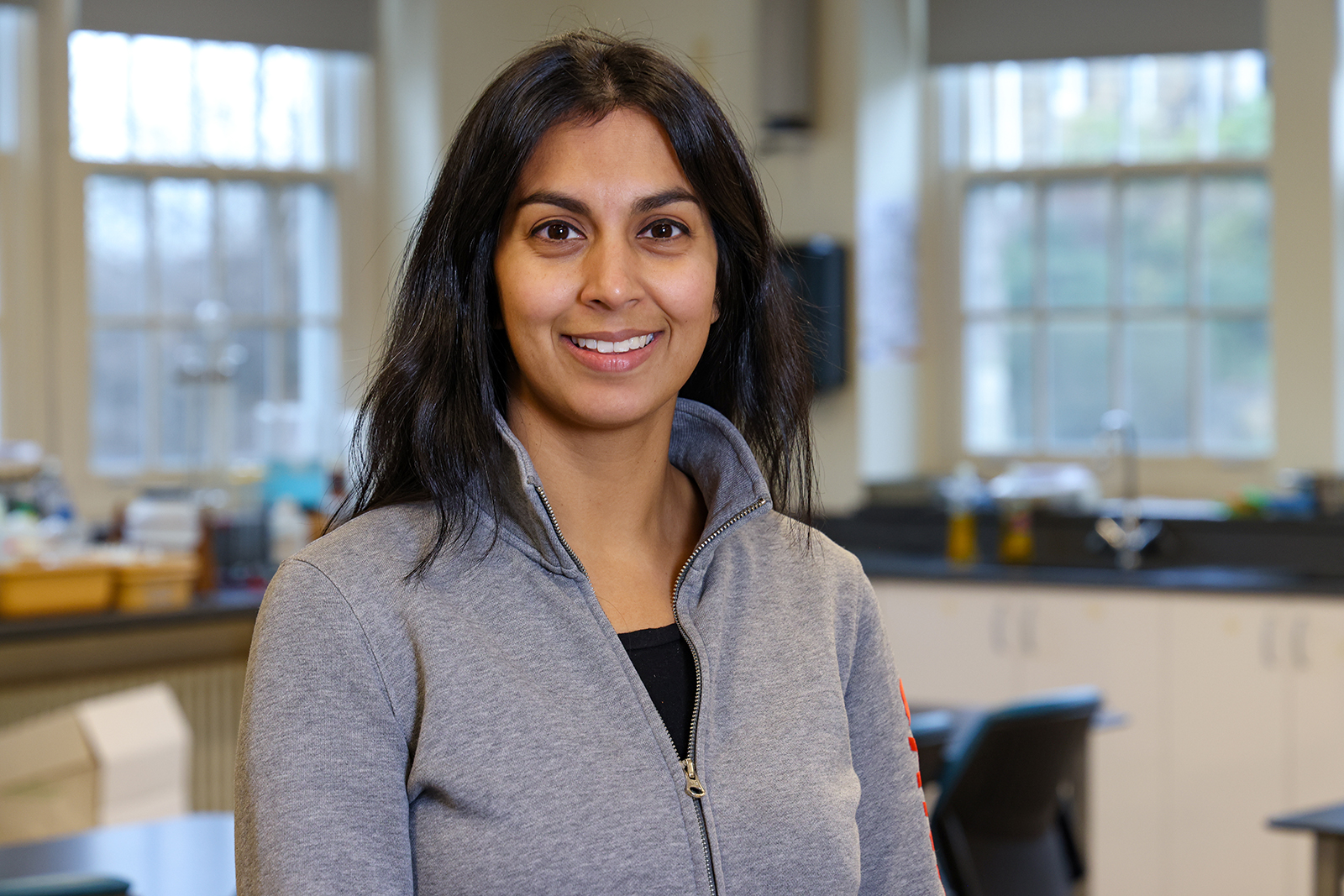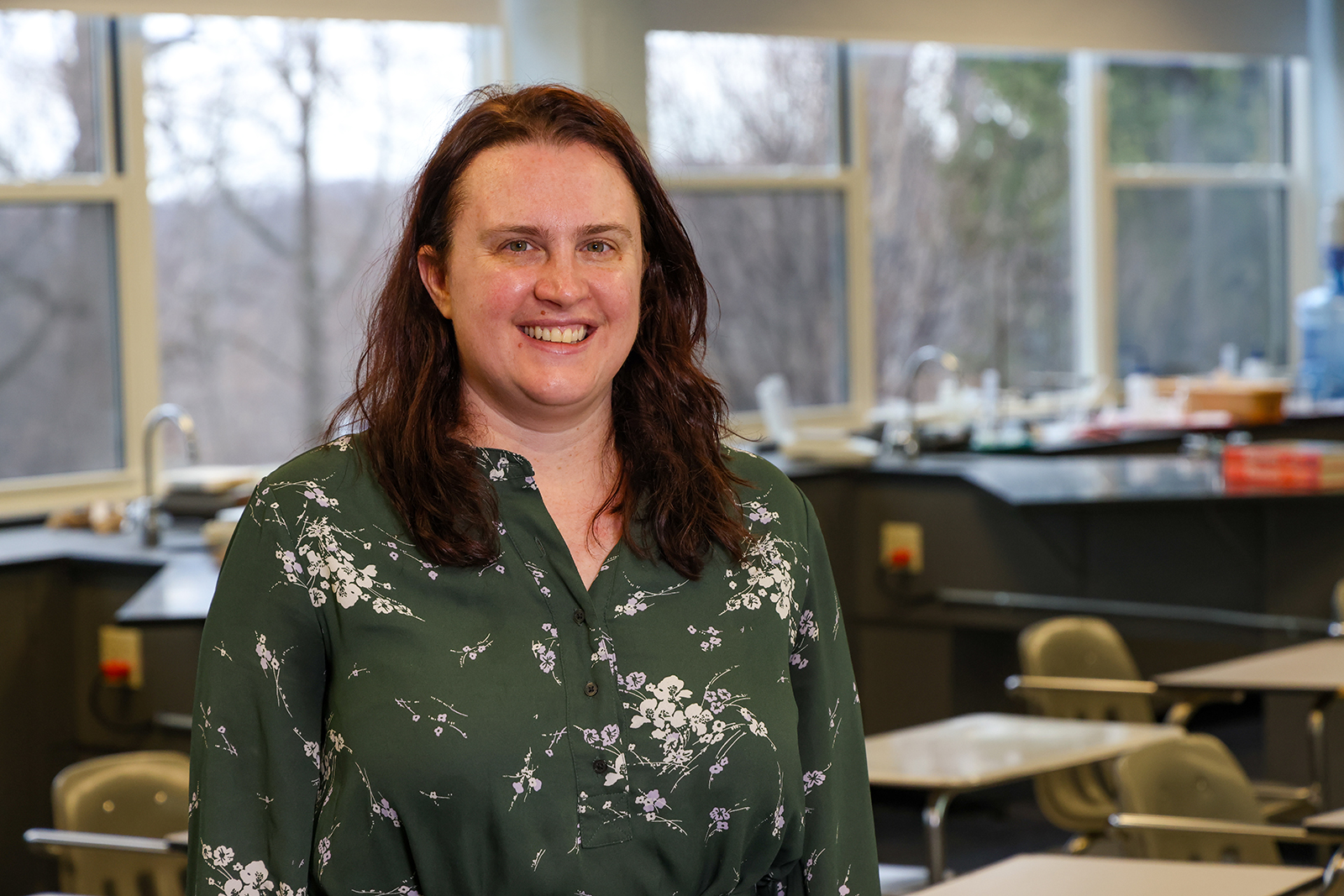
There’s a new approach to teaching science in Riverdale’s Upper School that was 10 years in the making, according to Teresa DiMauro, Ph.D., Upper School Science and Dance faculty member. Integrated Biology/Chemistry I and II, a two-year sequence, will replace the current Biology I and Chemistry I courses, beginning in Fall 2023.
“What we realized,” says Dr. DiMauro, “was that understanding biology is difficult without a chemistry background, so these subjects really need to be taught in context with one another.”
“This is in alignment with the Science Department’s mission statement, which is to develop citizen scientists who appreciate the need for science in addressing real-world problems and enabling responsible decision-making,” says Science Department Chair Shabari Lasrado. “Our intention is to foster curiosity and understanding of physical and natural phenomena, develop student minds, improve their character, and guide them into becoming responsible members of a global community. We believe this sequence of courses can truly meet that standard.”
“We spent the past few years in thoughtful planning, research, and considering all the requirements for this new pedagogical approach,” says Ms. Lasrado. “This included envisioning the ideal classroom environments, lab spaces, prep room spaces, and all necessary teacher preparation to make this change,” she says.
“In essence, what we did was to reconsider and recombine all the elements of Biology and Chemistry to create something new that we believe will best meet students’ needs,” says Ms. Lasrado.
“Science is inherently interdisciplinary,” explains Dr. DiMauro. “You pull from everything students know, from every area of study. For example, students learn about climate change in 9th grade History, and we can enhance their learning and bring a scientific perspective to the topic.”
The Integrated Biology/Chemistry sequence will be the study of phenomena-based essential questions, such as, “Why is Earth so good at sustaining life?” Or “Has Earth reached its carrying capacity?” Students will also have the chance to develop their own questions and conduct investigations and research.
“I am thrilled to learn that Riverdale is embarking on a forward-thinking curricular change by combining biology and chemistry instruction,” says Cecilia Toro, Ph.D., a Biology professor at Sarah Lawrence College, and a parent of two Riverdale students (P ‘32, P ‘36). “ The siloed way that these subjects have traditionally been taught is inefficient and suggests false distinctions between these interrelated disciplines. Interdisciplinary learning is the direction toward which science has been rapidly moving.”
“Educational programs which draw from multiple disciplines foster innovative solutions to increasingly complex global issues because scientific disciplines continue to expand and intersect in a myriad of meaningful ways,” adds Mika Tsugiyama-Bouvard, Program Manager of Stanford University’s Stanford in New York (P’25), “Interdisciplinary collaboration in science can empower students to leverage and amplify the impact of their new ideas at this frontier that pushes beyond traditional boundaries.”
Integrated Science can serve as a good foundation for students wishing to study within the field of science at the university level, according to Ms. Tsugiyama-Bouvard. “Higher education has seen an increased focus on interdisciplinary approaches within science and beyond (interdisciplinary majors, schools, labs, institutes, etc.), and it is exciting to see such collaborative programming in the Sciences be an integral part of Riverdale’s curriculum as Constructing America is within the Humanities.“
“You always want to inspire young minds to go into a science field,” says Ms. Lasrado, “ but more than that, our goal is to inspire students to think about how science influences their lives so that they can be changemakers. They’ll be able to apply scientific solutions to problems. We’re equipping them with the tools to be citizen scientists.”
Finally, Dr. DiMauro adds, “Students can Google anything – but to be able to critically look at information, data, facts with the tools you’ve developed – that is our goal.”

